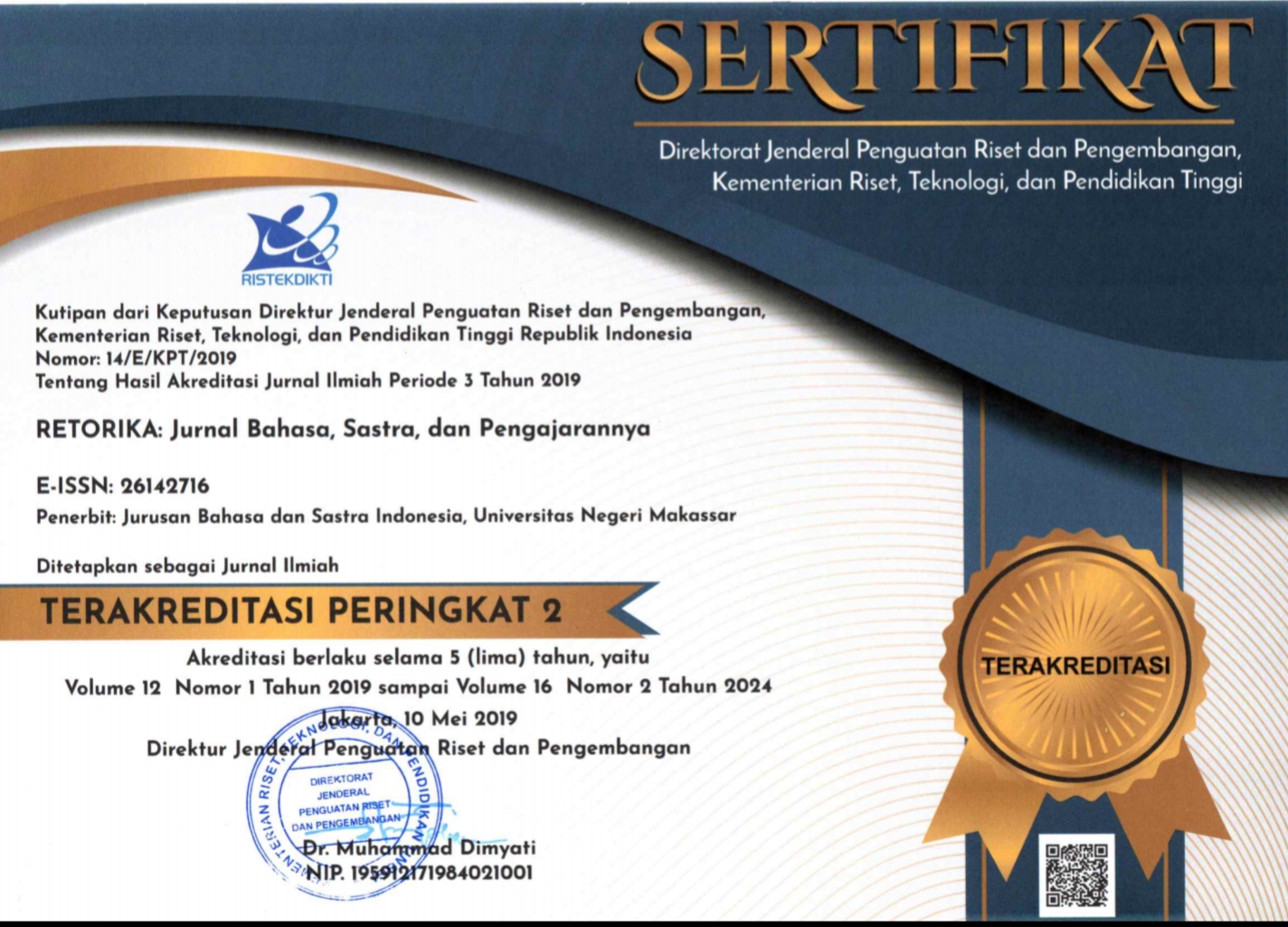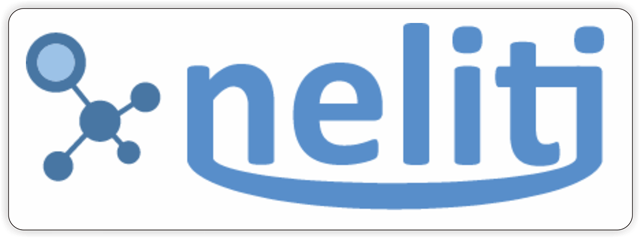THE CONSTRUCTION OF CHILDREN MORAL REASONING IN STRENGTHENING SELF-CONTROL
(1) Universitas Negeri Semarang
(2) Universitas Negeri Semarang
(*) Corresponding Author
DOI: https://doi.org/10.26858/retorika.v13i2.12436
Abstract
Self-control is achieved by popular children stories, by which they are able to help children see themselves and change their way of life to ensure a sustainable future. Besides, the stories also function to identify, investigate, evaluate, and take appropriate actions in order to maintain, protect, and develop one’s mentality and characters, environment, and society. The purpose of this study was to reveal the construction of children moral reasoning in children stories contained in a national daily newspaper of Suara Merdeka in 2018. As based on the research substance, this present study relied on the qualitative and critical analysis methods. The results suggests that children, as the main characters in every story, have morals and do reasoning in dealing with problems. The construction of moral reasoning is classified into three, i.e., construction of moral reasoning in children’s relationship with family, with friends, and with society. Such constructions will give relevance to children's self-control in solving various problems and coping with pressures.
Full Text:
PDFReferences
Adugna, A. B. (2015). How Green are Our Stories? Exploration of Ecological Subjectivities in Ethiopian Children’s Literature. Journal of Language and Culture, 6 (5): 39-51.
Alkestrand, M. & Owen, C. (2018). A Cognitive Analysis of Characters in Swedish and Anglo-phone Children’s Fantasy Literature. Interna-tional Research in Children’s Literature 11 (1): 65–79.
Boudreaux, B. (2006). The Representation of The Environment in Children’s Literature. Thesis. University of New Orleans. http://scholarworks.uno.edu/cgi.viewcontent.cgi?article:13 68&context=td. Diakses Juni 2017.
Calhoun, J.F. & Acocella, J.R. (1990). Psychology of adjustment and human relationship. Diter-jemahkan oleh R.S. Satmoko, edisi ketiga. Semarang: IKIP Semarang Press.
Duska, R. & Mariellen W. (1982). Moral Develop-ment: A Guide to Piaget and Kohlberg. New York: Paulist Press.
EtxanizErle, X. & López G. J. M. (2017). Children’s Literature and Nation Building: The Basque Case. Children’s Literature in Education Journal. 7 (1): 207–276.
Ghufron, M. N. & Rini R. (2010). Teori-Teori Psikologi [Theories of Psychology]. Yogya-karta: Ar-Ruzz Media.
Heath, M. A., Kathryn S. & Ellie Y. L. (2017). Us-ing Children’s Literature to Strengthen Social and Emotional Learning. School Psychology International, 38 (5): 541–56.
Kohlberg, L. (1980). “Stages of Moral Development as a Basis for Moral Education” dalam Brenda Munsey (Ed.). Moral Development, Moral Education, and Kohlberg: Basic Issues in Phi-losophy, Psychology, Religion, and Educa-tion. Birmingham Albama: Scott Religion Education Press.
Kohlberg, L. (1981). The Philosophy of Moral De-velopment Stages and Idea. San Fransisco: Harper and Row.
Kohlberg, L. (1995). Tahap-tahap Perkembangan Moral [Moral Development Stages]. Transla-tion. John de Santo and Agus Cremers. Yog-yakarta: Kanisius.
Lukens, R. J. (2003). A Critival handbooks of Chil-dren’s Literature. New York: Longman.
Magnis-Suseno, F. (2000). 12 Tokoh Tokoh Etika Abad Ke-20. Yogyakarta: Kanisius.
Medress, A. (2008). Storybooks: A Teaching Tool for Sustainability.http://digitalcollections.sit.edu /cgi/viewcontent.cgi?article=1057&context = isp_collection. Accessed on June 2017.
Miles, M. B. &. Huberman, A.M. (2009). Analisis Data Kualitatif [Qualitative Data Analysis]. Translation Tjetep Rohendi Rohidi. Jakarta: UI Press.
Neina, Q. A., Mardikantoro H.B., & Supriyanto T. (2015). Pengembangan Buku Pengayaan Menulis Cerita Anak Bermuatan Nilai Karakter Berdasarkan Content and Languange Integ-rated Learning (CLIL) untuk Siswa Sekolah Dasar Kelas Tinggi. Jurnal Seloka 4 (2).
Nurgiyantoro, B. (2010). Sastra Anak: Persoalan Genre. Jurnal Humaniora, 16 (2).
Qomariyah, U. (2005). Citra dan Pencitraan Anak dalam Telaah Fokalisasi Mieke Bal: Kajian Novel Negeri Awan Merah Karya Fahri Asiza. Thesis. Yogyakarta: Universitas Gadjah Mada.
Santrock, J. W. (2011). Perkembangan Anak 1 [Child Development 1]. Translation Mila Rachmawati & Anna Kuswanti. Jakarta: Er-langga.
Santrock, J. W. (2012). Perkembangan Anak 2 [Child Development 2]. Translation Mila Rachmawati & Anna Kuswanti. Jakarta: Er-langga.
Suara Merdeka. (2018). Cerita Anak dalam Tabloid Yunior Suara Merdeka www. Suara merdeka. com.
Sutherland, R. (1985). Hidden Persuaders: Political Ideologies in Literature for Children. Chil-dren’s Literature in Education, 16 (3): 143-157.
Article Metrics
Abstract view : 376 times | PDF view : 52 timesRefbacks
- There are currently no refbacks.
Copyright (c) 2020 U'um Qomariyah

This work is licensed under a Creative Commons Attribution-NonCommercial 4.0 International License.
Published by:
Department of Indonesian Language, Faculty of Languages and Literature, Universitas Negeri Makassar in cooperate with Asosiasi Dosen Bahasa dan Sastra Indonesia (ADOBSI) and Ikatan Program Studi Pendidikan Bahasa dan Sastra Indonesia (IKAPROBSI).
Address: Department of Indonesian Language Office, DG Building Second Floor, UNM Parangtambung, Daeng Tata Raya Street, Makassar, South Sulawesi, Indonesia
 Email: retorika@unm.ac.id
Email: retorika@unm.ac.id

RETORIKA: Jurnal Bahasa, Sastra,dan Pengajarannya is licensed under a Creative Commons Attribution-NonCommercial 4.0 International License.
















